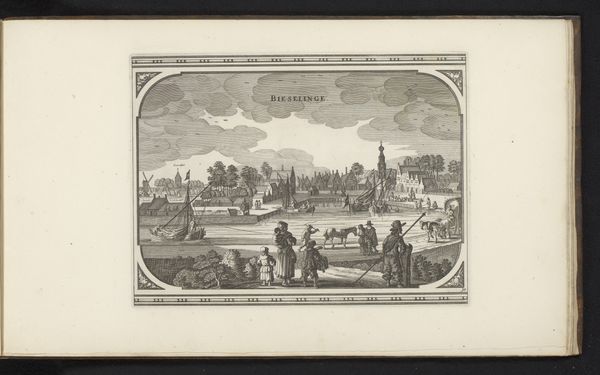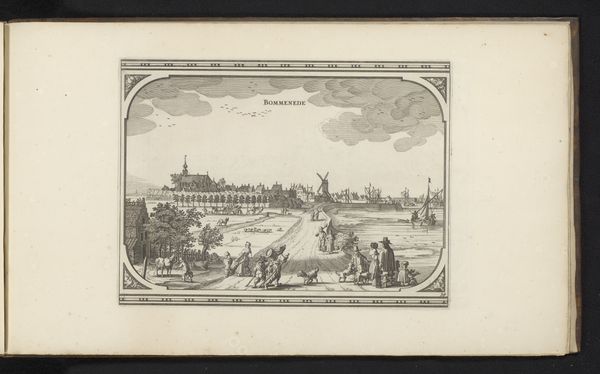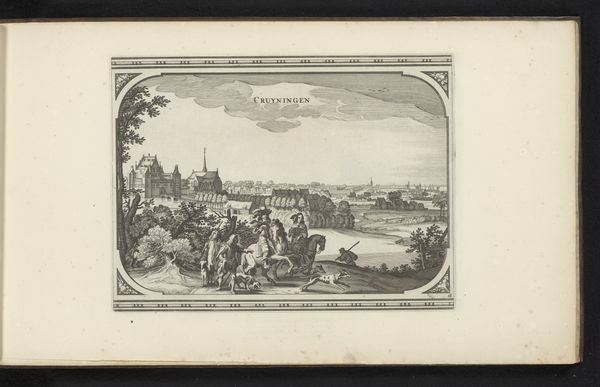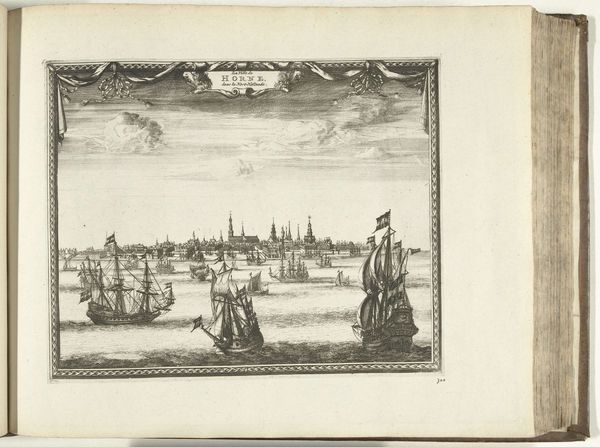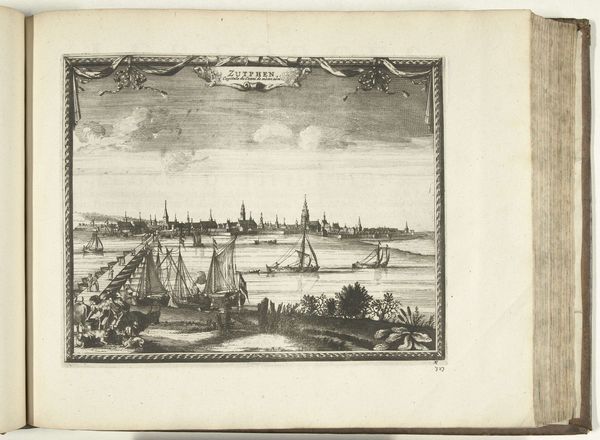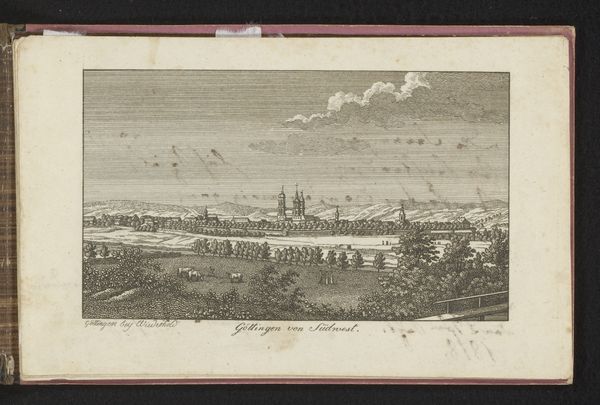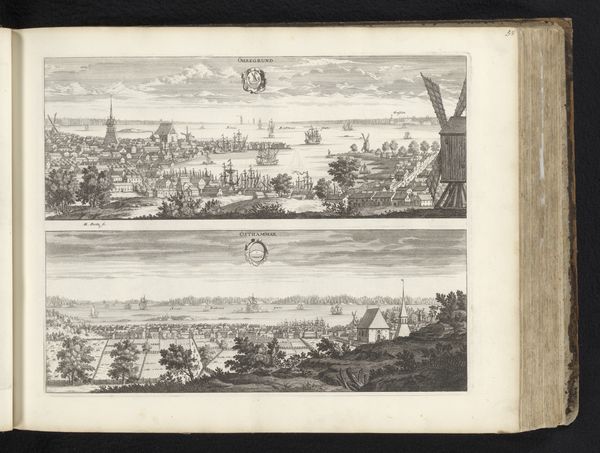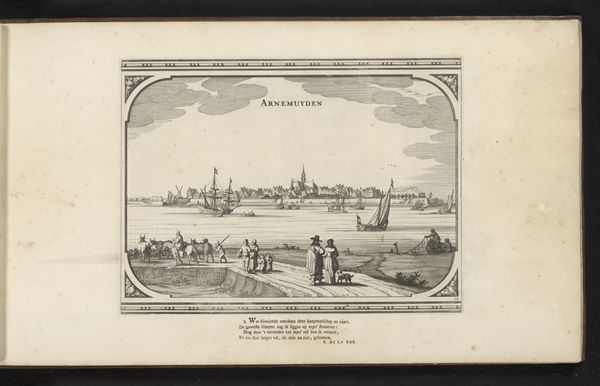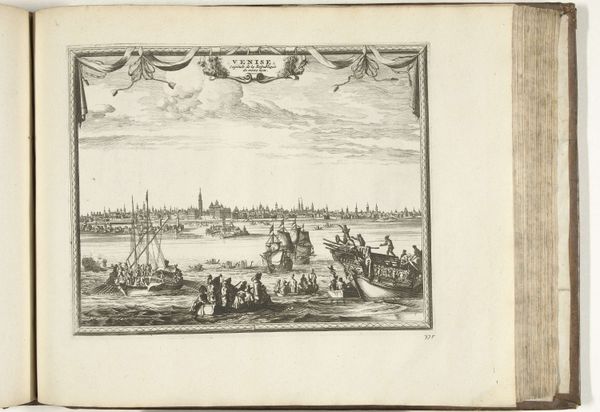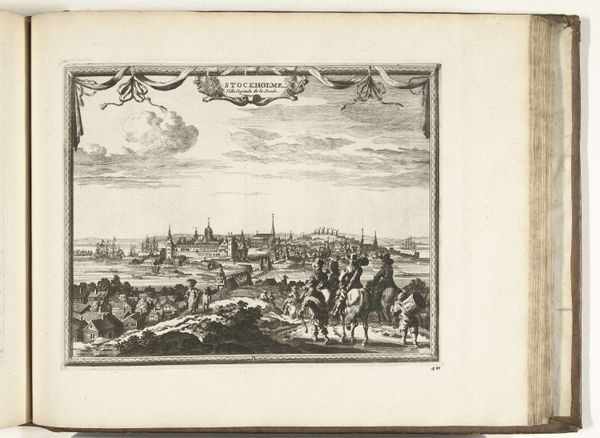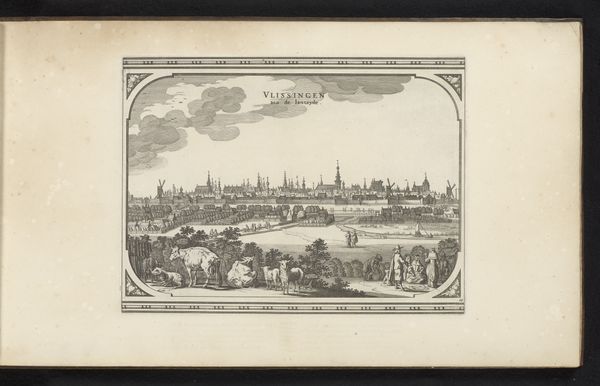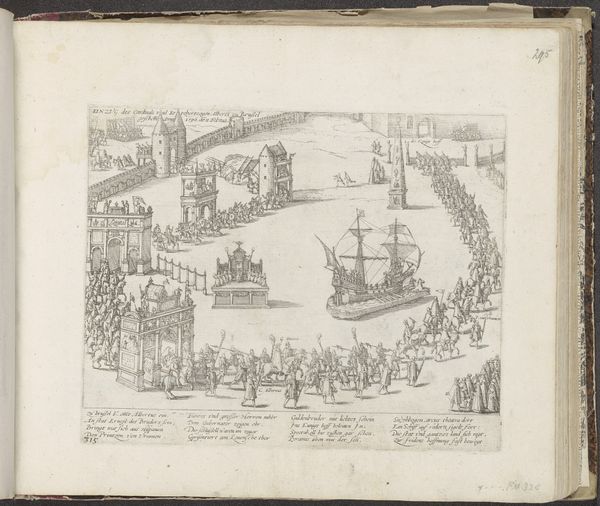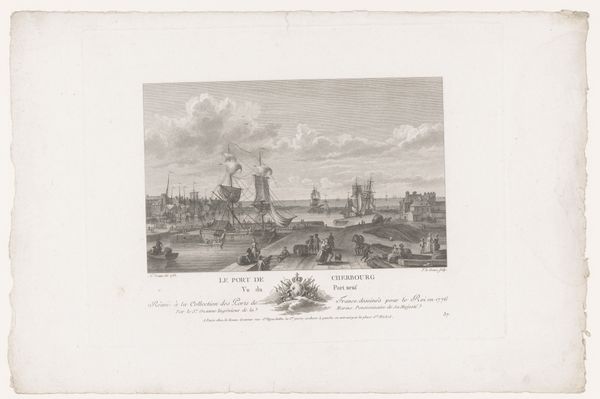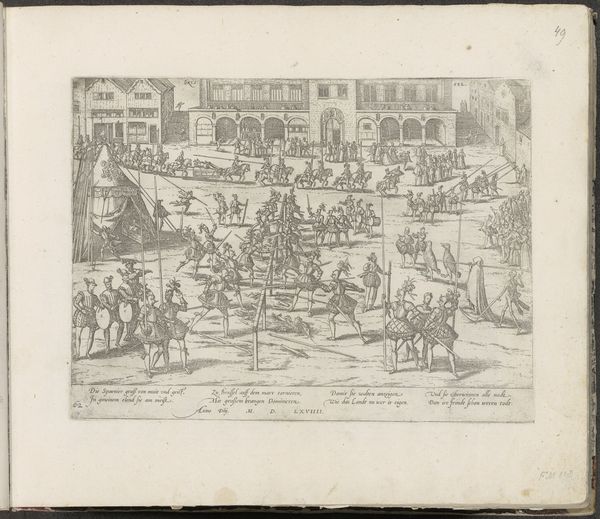
drawing, print, ink, engraving
#
drawing
#
baroque
#
pen drawing
#
dutch-golden-age
# print
#
landscape
#
figuration
#
ink
#
line
#
cityscape
#
history-painting
#
engraving
#
realism
Dimensions: height 211 mm, width 280 mm
Copyright: Rijks Museum: Open Domain
Curator: Here we have Pieter Hendricksz. Schut’s "Gezicht op Bruinisse," dating back to approximately 1662. It's a striking pen drawing, almost like a finely detailed map. Editor: It feels so alive! The small, busy figures and various types of boats pull me in immediately. There’s so much activity, from the shore to the distant ships. What strikes me is the way it conveys the feel of a vibrant coastal community. Curator: Indeed, Bruinisse was likely a significant hub, and the etching allows us to reflect on the social structures evident in such port cities. Observe how the church sits prominently amidst smaller dwellings and a rigid grid of manicured trees. The image highlights both industry and hierarchies inherent within the societal framework. Editor: And I find myself focusing on that steeple; such a quintessential symbol, visually anchoring the community, reaching for something beyond. Even the plume of smoke in the distance seems symbolic, perhaps of industry, but maybe also signifying domesticity – daily meals and human life within the houses. Curator: That plume, within the historical context, could certainly reference the thriving maritime trade, and perhaps also colonialism and its inherent inequities, an element undeniably interwoven with Dutch prosperity in this era. The image itself becomes a window onto a past fraught with power dynamics that still reverberate. Editor: But on the micro level, consider how water carries its own archetypal associations – fluidity, adaptability, life itself! And the ships sailing represent both risk and journey. The people who work along that shore, the people who appear to live in boats – they hold such deep symbolic power for the hopes that water represents. Curator: Absolutely, it’s vital to dissect how Schut's choices reveal both opportunity and inequality, examining how systems impact specific individuals within the depicted population, and indeed those impacted by maritime activity further afield. Editor: I appreciate that duality: looking at both individual hopes and social responsibility to people nearby and faraway, all represented so expertly here by the ships, buildings, and harbor of "Gezicht op Bruinisse". Curator: I think studying these depictions pushes us to ask important questions about value, what is gained, and by whom. Editor: Exactly, bringing our present-day awareness to the interpretation of history allows for a much more complete understanding of our human journey as a whole.
Comments
No comments
Be the first to comment and join the conversation on the ultimate creative platform.
